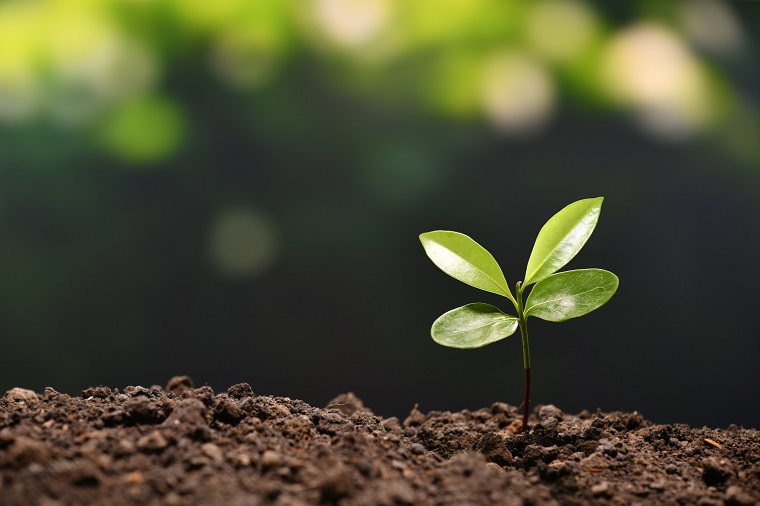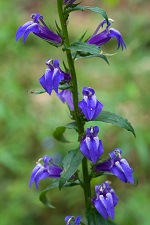Limited Phosphorus Supply? Try Your Friendly Neighbourhood Fungi
By Michael Lim
7 August 2019

Gardeners must take many things to take into consideration, and those with an especially green thumb know that one of the most important factors for healthy plants is soil. Soil conditions such as moisture and nutrient levels can dictate not only plant survival, but how much they grow. But before you rush out to buy some top-of-the-line fertilizer, new research from Prof. Hafiz Maherali from the Department of Integrative Biology suggests considering another factor that can also be critical to plant survival: soil fungi.
Interactions between fungi in soil and the roots of plants are some of the most ancient and wide-spread relationships on earth. In fact, nearly 90 percent of all land plants are believed to interact in some way with fungi. One of the most well-known beneficial soil fungi are arbuscular mycorrhizal (AM) fungi. AM fungi are thought to work mutualistically with plants by increasing the availability of water and nutrients, and increase protection from pathogens; in exchange, plants roots provide food (in the form of sugars) and shelter for the fungi.
Maherali has been working with AM fungi for decades, albeit indirectly at first.
“When I was a graduate student, I remember digging up plants and seeing mycorrhizal fungi, but I was more focused on physiological measurements of the plants such as the photosynthetic rate of leaves and the ability of stems to supply leaves with water, which influence how plants adapt to drought,” he says. “Once I came to the University of Guelph, I started thinking more about the consequences of plant-fungal interactions, and wondered why there was so much variation in how plants respond to fungi.”
Because fungi can affect many soil parameters, Maherali realized he needed to narrow his focus. He zeroed in on the mineral phosphorus, one of the most important nutrients required by plants. Phosphorus levels are typically very low in most soils, and it does not readily dissolve in water, making it difficult to be taken up by plant roots. But AM fungi can alter phosphorous to make it more easily dissolvable and can also take it up directly and transfer it to plants, and so the mineral serves as a currency of sorts in mutualistic relationships between soil fungi and plants.
By definition, a mutualistic relationship benefits both parties – but it is not always a simple or consistent relationship, especially when it comes to the interactions between plants and fungi. For example, AM fungi can vary between populations and do not always enhance nutrient availability to the same extent. Because AM fungal communities as little as 30 metres apart can differ from each other, Maherali suspected that the fungi could be involved in driving plant adaptation at a very local scale, and that phosphorus was likely playing a key role in this process.

A Lobelia plant growing
in the wild.
(Photo by Eric Hunt,
CC BY-SA 4.0)
To test this prediction, MSc student Philip Rekret and Maherali obtained Lobelia seeds from two distinct plant populations located about 1 kilometre apart, and planted them in the greenhouse at the University of Guelph in what is known as a ‘reciprocal transplant experiment’. What this means is that seeds from both locations were grown with AM fungi collected from either their ‘home’ or ‘away’ location, in soils containing either high or low levels of phosphorus. To serve as a control, some seeds from each location were also planted without any fungi.
The results were astonishing.
When phosphorus levels were high, Lobelia plants from both populations grew the same amount, regardless of whether any fungi were present. But, when phosphorus levels were low, the presence of fungi – from either location – increased growth by nearly two-fold. Most importantly however, growth was greatest when the plants were grown with AM fungi from their ‘home’ location. In other words, while any population of AM fungi can help boost growth, the AM fungi that a plant’s ancestors co-evolved with will have the greatest effect.
According to the researchers, the study provides a direct demonstration of how a mutualistic relationship with AM fungi can lead to plant adaptation at a very fine geographic scale. It also confirms that phosphorus acquisition is a central driver in this process.
Maherali anticipates that this information could help with future plant restoration work and management strategies. Currently, when planning to reseed an area, much effort is put into matching seeds with local climatic factors like average temperature or level of rainfall. But Rekret and Maherali’s study shows that other organisms can also influence plant survival and growth in the long-term. For example, in addition to soil fungi, potential interactions with herbivores and pollinators may also need to be considered in restoration planning.
“Interactions in nature are much more complex and variable than perhaps we can even imagine them to be,” says Maherali. “But to understand how to rehabilitate communities and ecosystems, we need to understand the physiology and ecology of the organisms living there, and know how those interactions evolved together.”
Funding for this research was provided by the Natural Sciences and Engineering Research Council of Canada.
Read the full article in Oecologia.
Read about other CBS Research Highlights.